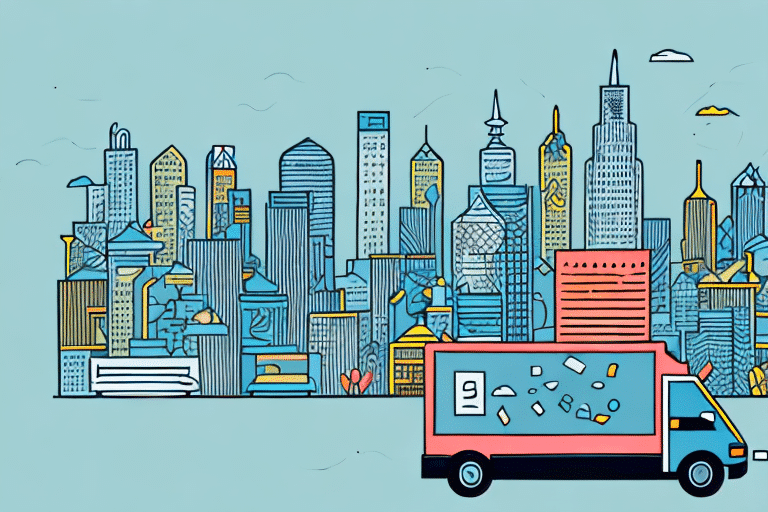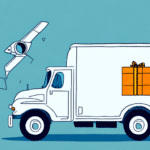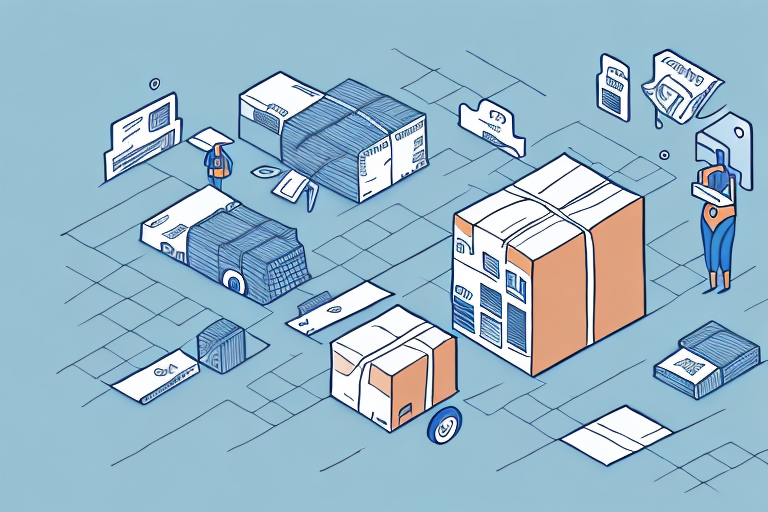Delivery Promises: How They Can Drive Ecommerce Growth
In the world of ecommerce, customer satisfaction is paramount. One of the most significant factors contributing to customer satisfaction is the delivery process. As online shopping continues to surge in popularity, it's increasingly important for ecommerce businesses to prioritize delivery promises. In this article, we'll explore the importance of delivery promises and how they can drive ecommerce growth.
Understanding the Importance of Delivery Promises in Ecommerce
Delivery promises refer to a seller's commitment to meeting a specific delivery time or date. In ecommerce, these promises are crucial for satisfying customers and building a loyal customer base. According to a Statista report, global ecommerce sales are expected to reach $6.54 trillion by 2023, highlighting the competitive nature of the industry.
When customers place orders online, they expect timely delivery. Failure to meet delivery promises can lead to frustrated customers and lost business. For instance, a U.S. Department of Commerce study found that 60% of customers are less likely to shop with a retailer again after a poor delivery experience.
One key factor affecting delivery promises is the shipping method chosen by the seller. Different shipping methods have varying delivery times and costs. It's essential for sellers to select the right method that aligns with their customers' expectations. For example, if a customer opts for express shipping, they anticipate receiving their product within a day or two. Failing to meet this promise can result in negative feedback and lost business.
Effective communication is another critical aspect of delivery promises. Sellers should keep customers informed about the status of their orders, including any delays or issues that may arise. This transparency helps manage customer expectations and builds trust between the seller and the customer. Providing tracking information and regular updates on the delivery status can also reduce customer inquiries and complaints.
Meeting Customer Expectations with Reliable Delivery Promises
Meeting customer expectations is vital for the success of any ecommerce business. Reliable delivery promises form the foundation of these expectations. When a seller commits to a delivery promise, they assure the customer that their order will arrive on or before a specific date, allowing customers to plan accordingly and fostering trust.
However, it's crucial for sellers to ensure they can consistently fulfill their delivery promises. Failure to do so can result in disappointed customers, negative reviews, and loss of business. To avoid this, sellers should implement a reliable shipping and delivery system with clear communication channels to keep customers informed about their order status.
Offering expedited shipping options for customers who need their orders sooner and being transparent about any potential delays or issues that may arise during the shipping process can further enhance reliability.
The Role of Delivery Promises in Building Trust with Online Shoppers
Trust is a cornerstone of any business relationship, especially in ecommerce. With countless sellers competing for customers' attention, building trust is a key differentiator. Delivery promises play an essential role in establishing this trust. Consistently meeting delivery promises demonstrates reliability and commitment to customers.
It's not just about meeting promises; effective communication about potential delays or issues with delivery is equally important. By keeping customers informed and offering solutions, sellers can strengthen trust and loyalty.
Delivery promises also impact a seller's reputation and overall brand image. Negative reviews or complaints about late or unreliable deliveries can quickly spread on social media and other online platforms, damaging a seller's credibility and potentially deterring potential customers. Conversely, positive reviews and feedback about timely and dependable deliveries can attract new customers and build a strong, trustworthy brand.
The Impact of Delivery Speed on Customer Satisfaction and Repeat Business
Delivery speed significantly influences customer satisfaction. According to a study by Invesp, 79% of consumers consider fast shipping to be very important when choosing an online retailer. Businesses that prioritize fast delivery are more likely to satisfy customers and secure repeat business.
By committing to delivery promises and delivering orders quickly, ecommerce businesses can create a competitive advantage and stand out from their competitors. However, it's important to note that delivery speed alone does not guarantee customer satisfaction. The quality of the product and the overall customer experience also play crucial roles. If a customer receives a product quickly but it is damaged or does not meet their expectations, they are unlikely to return to that business for future purchases.
Additionally, fast delivery can incur costs for the business. Expedited shipping options and the need for additional staff to handle increased order volume can add up. Businesses must balance the benefits of fast delivery against the potential costs to determine the most effective strategy for their specific industry and customer base.
Using Delivery Promises as a Competitive Advantage in Ecommerce
Delivery promises can serve as a powerful tool for ecommerce businesses aiming to gain a competitive edge. By offering faster delivery times than competitors, businesses can attract more customers and increase sales. Additionally, offering flexible delivery options or free shipping can incentivize customers to choose one business over another.
However, it's essential for businesses to ensure they can uphold their promises. Failing to meet delivery expectations can lead to negative reviews and a loss of customer trust. To prevent this, businesses should establish a reliable shipping and logistics system and maintain clear communication with customers regarding any potential delays or issues.
Another strategy to leverage delivery promises as a competitive advantage is offering personalized delivery options. For instance, some businesses allow customers to select a specific delivery time or location, such as their workplace or a nearby locker. This flexibility can be particularly appealing to busy customers who may not be available to receive packages at home during the day.
Improving Shipping and Delivery Processes to Deliver on Your Promises
Consistently meeting delivery promises requires ecommerce businesses to have efficient and effective shipping and delivery processes in place. This may involve partnering with reliable carriers, optimizing warehouse operations, or investing in technology that streamlines the delivery process. Continuously improving these processes can enhance a business's capacity to meet delivery promises and scale operations.
Implementing a real-time tracking system is one way to improve shipping and delivery processes. This allows customers to track their orders and receive updates on the delivery status, reducing customer inquiries and complaints. Moreover, it provides businesses with valuable data on delivery times and potential delays, enabling proactive issue resolution.
Investing in a tracking system can significantly enhance the overall customer experience and build trust. For example, platforms like FedEx and UPS offer comprehensive tracking solutions that businesses can integrate into their ecommerce systems.
Common Challenges Faced in Meeting Delivery Promises and How to Overcome Them
Meeting delivery promises is not without its challenges. Ecommerce businesses may encounter issues such as unexpected demand surges or supply chain disruptions that make it difficult to fulfill orders on time. Proactive planning can help businesses navigate these challenges effectively.
- Demand Surges: Investing in additional warehouse space or automation can help manage increased order volumes during peak periods.
- Supply Chain Disruptions: Building relationships with multiple carriers and diversifying suppliers can mitigate the impact of disruptions.
- Inaccurate Address Information: Implementing address verification software or requiring customers to confirm their address before finalizing orders can reduce delays and lost packages.
Natural events such as weather disturbances can also disrupt delivery schedules. In such cases, businesses should communicate transparently with customers about potential delays and offer alternative delivery options, such as expedited shipping or in-store pickup. Having a contingency plan in place for these situations is crucial to minimize the impact on delivery promises.
Tracking and Monitoring Deliveries to Ensure On-Time Deliveries
Ensuring on-time deliveries involves closely tracking and monitoring the delivery process. Utilizing technologies like GPS tracking or automated updates allows businesses to keep customers informed throughout the delivery process and promptly address any issues that arise.
Data analytics can be employed to identify patterns in delivery issues, enabling businesses to develop strategies to improve delivery times over time. For instance, analyzing delivery data can help identify bottlenecks in the shipping process or recurring delays with specific carriers.
Establishing clear communication channels between the delivery team and the customer is also essential. Providing customers with estimated delivery times and allowing them to track their deliveries in real-time can enhance transparency and trust. Additionally, partnering with third-party logistics providers can help optimize delivery operations, reduce costs, and improve delivery times.
Best Practices for Communicating Delivery Promises to Customers
Effective communication of delivery promises is crucial for building customer trust. Here are some best practices:
- Clear Information: Provide clear and concise information about delivery times and dates during the checkout process.
- Regular Updates: Send regular updates throughout the delivery process, including order confirmation, shipping notifications, and delivery confirmations.
- Multiple Communication Channels: Offer various channels for customers to reach out with questions or concerns, such as email, phone support, and live chat.
- Customer Feedback: Utilize customer feedback to identify areas for improvement in communication and delivery processes.
Implementing these best practices can enhance the customer experience and reinforce the reliability of delivery promises.
Case Studies: Companies Successfully Boosting Ecommerce Growth through Delivery Promises
Several ecommerce businesses have successfully leveraged delivery promises to drive growth:
- Amazon Prime: Amazon's Prime delivery program offers members free two-day shipping, same-day delivery in select areas, and access to exclusive content. This program has been a major factor in Amazon's success, fostering a loyal customer base and driving repeat business.
- Zappos: Known for its exceptional customer service, Zappos offers free shipping and free returns, ensuring customer satisfaction and building trust.
- Shopify Stores: Many Shopify-based stores have implemented fast and reliable delivery options to enhance customer satisfaction and differentiate themselves in a crowded market.
These examples demonstrate how prioritizing delivery promises can lead to increased customer loyalty and business growth.
Future Trends in Ecommerce Delivery Promises and Their Impact on the Industry
The ecommerce industry is continually evolving, and delivery promises are set to play an increasingly significant role in driving growth. Key future trends include:
- Drones and Autonomous Delivery Vehicles: Companies like Amazon Prime Air are exploring drone deliveries to expedite shipping times.
- Warehouse Automation: Increased investment in automation technologies can streamline warehouse operations, reducing processing times and enhancing delivery speed.
- Same-Day and Next-Day Delivery: The demand for faster delivery continues to grow, with more retailers offering same-day or next-day delivery options to meet customer expectations.
- Sustainable Delivery Practices: With rising environmental concerns, businesses are adopting eco-friendly delivery methods, such as electric vehicles and carbon-neutral shipping options.
By staying abreast of these trends and investing in delivery processes that align with evolving customer expectations, ecommerce businesses can continue to thrive and expand.
Conclusion
Delivery promises are a critical component of ecommerce growth. By meeting customer expectations with reliable and efficient delivery promises, businesses can build trust, enhance customer satisfaction, and create a competitive advantage in the marketplace. To succeed in the dynamic world of ecommerce, businesses must prioritize the delivery process and proactively develop strategies to consistently meet delivery promises. Doing so will not only earn repeat business and foster a loyal customer base but also drive long-term growth and success in the ecommerce industry.




















